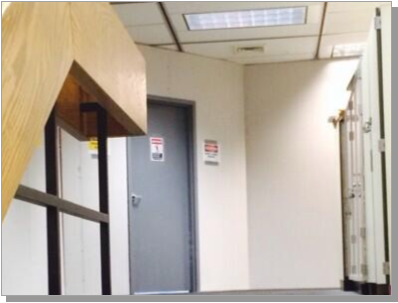An East student recently walking through the third floor Social Studies area may notice one glaring difference about it-the apparent lack of a third floor Social Studies area. Cordoned off by stark gray walls and a big “WARNING: CONSTRUCTION” sign, this space is the first to be worked on as East undergoes some of its biggest renovations since its original construction.
Mr. Scanzuso, the assistant principal, walked us through the changes:
“The new renovations are going to take place in a couple of places over a 2 year period. The 3rd, 2nd, and 1st floor are all getting new ceiling tiles. The 3rd and 2nd floors will be replacing lockers and floors, meaning new carpeting. And in heavily trafficked areas (hallways) of the 2nd and 3rd floors, there will be rubberized tile instead of carpet. It will still be quiet, but more durable–the rug won’t wear out.
During the year, the Social Studies classrooms (305-310) and later on the math classrooms (301.302, 303) will be renovated. Over the summer, the rest of the third floor except for the science wing will be renovated. On the third floor, classrooms in math and social studies with windows will receive new walls that cannot be slid out because our current ceiling tile system that supports this is outdated. Next year, the entire second floor will be renovated. The science wings on the 2nd and 3rd floors have already been renovated and are exempt from the current process.
The plumbing will be updated in lavatories–sinks and toilets will be replaced.
Because of these renovations, there will be no summer school at East for the next two years.”
The most striking change that’s resulting from these renovations is the replacement of the third floor’s sliding walls with actual walls. You heard it here first, folks. East is getting walls.
The construction process itself also temporarily displaced many of the Social Studies teachers, a fact that some are none too happy about. (Mr. Nogowski’s constant, loud complaints about his room change may be one indicator.) When asked about the renovations’ effects on teaching, Psychology and Global teacher Mrs. Bailey says, “Because teachers will have to change the classroom area, [the construction] may be a temporary distraction to the students. But it will only last a short time and can be overcome.”
Students’ and teachers’ reactions to the renovations range from excitement to indifference to absolute outrage.
Mrs. Bailey confesses that she’s “not a big fan” of the changes, stating, “I like being able to change the structure of the area if a situation arose in the classroom. Also the carpeted squares are nice to fix stains, but how well it wears can only be tested with time. In this open environment, carpets are necessary.”
Senior Peter Kazmierczak expressed dismay at construction of permanent walls, saying, “Through the years, I really came to love the no walls theme. When I get a haircut and the hair stylist asks where I go, I’ve always said ‘Williamsville East: the school without walls!’ It’s a shame future classes won’t be able to say the same when they go to get haircuts. No walls meant experiencing the power of Nogo first hand freshman year during Global… while being in the class next to his. No walls meant unexpected pop-ins by Mr. Harnick in Redmond’s classes after one of our students accidentally banged his head on the divider and Redmond was compelled to knock back. Those special interactions make it worthwhile.”
(To clarify, East won’t necessarily be adding new walls, just reinforcing the old ones so they don’t slide freely anymore. But the sentiment is the same.)
Across the entire United States, WIlliamsville East High School is one of the few high schools that can still boast an open classroom setup with no walls on the top two floors. This open classroom style started in the 1960’s and 70’s, when pedagogues advocated a return to the one-room school house. Educators believed that taking down interior walls would make a freer learning space and encourage more creativity in students. The open classroom design spread rapidly throughout the country (especially in elementary schools), along with ideas supporting open education, informal curriculums, and a more relaxed teaching style. The open classroom idea died down when a lagging economy, public school violence, and slipping test scores spurred a “back to the basics” movement in the late 1970’s. Suburban and urban school districts were once again dominated by traditional, walled classroom schools. Williamsville East, built in 1975, is one of the few remaining open-style schools from the “hippie” experimental education era.
For the longest time, Williamsville East has distinguished itself from other schools by its lack of walls. We pride ourselves in East’s office-like, cubicled floor plan. The renovation, though it’s changing the perception we have of East’s “no-walls” characteristic, can only serve to improve the school. Look forward to seeing some major differences around the third and second floors in the coming years.










